| Umělec 2008/1 >> A Fairy Tale about Small Girls, a Blue Jacket and Some Random Animals | Просмотр всех номеров | ||||||||||||
|
|||||||||||||
A Fairy Tale about Small Girls, a Blue Jacket and Some Random AnimalsUmělec 2008/101.01.2008 Alena Boika | landscape | en cs de es |
|||||||||||||
|
“There’s nothing like eating hay when you’re faint,”
the King remarked to her, as he munched away. “I should think throwing cold water over you would be better,” Alice suggested: “or some sal-volatile.” “I didn’t say there was nothing better,” the King replied. “I said there was nothing like it.” Lewis Carroll, Through the Looking Glass I’d never met either of them. Then, one day, I came across some amusing works on the walls of Entrance Gallery at Prague’s Karlin Studios. Every day as I passed by the exhibition entitled “Yesterday, Today and Tomorrow” (2007), various stories started forming in my head in which the main characters were two artists and the personages depicted in their works. Once upon a time, there were two girls: Denisa Krausová and Lucie Ferliková. They liked to draw and invent all kinds of stories, animals and plants; about children, I’m not sure. One character is present in both of their lives. He wears a blue jacket—a contemporary variant Blue Beard. Two girls – two different artists – their works are often exhibited together because when located in a common space, they tend to enhance one another. Long stories emerge from their works, imbued with psychological suffering supplied by surrealistic details. Both girls were born in small, non-descript Moravian villages. Denisa started out by transforming her own life story into a fairy tale—an ever-optimistic one that always had a happy ending. Lucie—playing with mystifications, raising common situations to absurd proportions, delving into ecstasies of violence, and traveling through time. Almost always, both artists draw themselves. A personage of one of the artists perceives the world as a child, through interaction with an improved reality; the personage of the other mostly suffers, or is subject to violence. Psychology and art therapy are the most appropriate structures through which to analyze their works. In no way lessening their artistic value, this just shifts them toward a different field. As such, I shall refrain from analyzing Freudian manifestations; no phallic symbols will be unveiled, and other obvious indications shall be withheld; instead, I give the artists the right to express themselves on their own. Denisa Krausová: Embrace your past Born in Jihlava, the oldest of mining towns, immediately on the border, where Nothing Ever Happens (well, there is a documentary film festival), Denisa Krausová is in constant search of anything special. As such, she incessantly seeks out and depicts in her works the disconcerting and provocative, yet remains restrained from revealing any narrative resolution. The town is steeped in an atmosphere of doom and an anxious yearning for anything, best expressed by a depiction of a snail in an industrial landscape typical of any similar region. Although the character, Assol, is not present in the painting, her presence is implied, having hung up the washing and gone to the seashore in the hopes of seeing the Scarlet Sails. One work is a key to Denisa’s works—a clue. It is an original—feminine—response to a famous work by Neo Rauch depicting men standing at a counter in a small brightly lit bar, surrounded by a forest as a thunderstorm looms overhead. A road meanders somewhere past them into a different life. In Denisa’s painting, a girl stands beside a similar rectangle glowing in the night, gazing upon a road along which a horse gallops. Rendered here is anticipation of a miracle, whereas its reality, were it to come true, would bring only disappointment—because it would not be the miracle. Such indirect references can be found in many of Denisa’s works. For example, Houpačka (Girl on the Swing) is a paraphrase of The Swing by Jean-Honoré Fragonard (1776). Looking at the birds in Asphalt and Oil on Canvas (2005), I could not help but recall Rockwell Kent’s block-prints for Melville’s Moby Dick. Her modern interpretation of the Last Supper, in which the artist observes the action, is very amusing. Here, she is a main character—an artist with a scalpel in her hand, looming over the table about to render her own justice. Two works—the washing of a primary working tool, a gigantic brush, and an elegant work called Tělovka (Flesh-colored), with dough dripping from its pedestal, would serve as a gentle reminder of American pop art. The illustrative and demonstrative character of many of Denisa’s works are the result of her studying in graphic school, where she majored in the poster art. Many works can be read as fairy tales in which subject and action progress according to the spectator’s desire. Nevertheless, the situation will always “fairly improve.” A favorite technique of the artist is to mix everything up, to totally embarrass the spectator, to create an illusion of a gloomy and frightening reality—and then to turn this impression inside-out. What looks like the Realm of the Dead, with all the corresponding sequences, is actually just a pleasant stroll during which skeletons conduct an excursion for the artist and her friend. When Denisa traveled to Romania, she fell in love with the country. A conflagration that she saw there was engraved into her imagination—it was a sight so terrible that she resisted rendering it realistically. Wanting to save everything and to improve, she drew a green conflagration, in which everything looked as it would in the spring. Everything was very festive and unreal—but for fun. Even a skull-shaped stone sheds a tear. Some of her works are distinctly reminiscent of an engaging computer game’s virtual reality in which the main task would be to find a hidden figure of the artist—the main demiurge amid everything going on among permanent skeletons, horses, flies, bones, and flowers. With complex multi-figural compositions and diverse personages, her work comes across similar to the paintings of Hieronymous Bosch. Some works are undoubtedly naïve. With all their details, they are peculiar combinations of comics and Surrealism. Still, all these definitions introduce more limitations than they help to better understand them. This seems to me a very Czech image, but when I try to figure out what is so Czech about it, it really becomes obvious that, say, an adoration of trains is not endemic to the Czechs. Indeed, a man with a moustache, a happy dog upon whose nose is perched a chicken, and all those little houses could originate from anywhere and belong to any latitude or culture. Nevertheless, one tends to simultaneously think of Surrealists and that red-nosed mole—a favorite character of Czech animation. With intentional idiocy, some works come across gleefully mocking anything you may want to say about them. Mickey Mouse is seated cheerfully upon a prancing horse, as if he were in an equestrian portrait of some historical general. One of her directions formally could be called “geometrically geographical.” Dead twin towers emerge from darkness; Peru glimmers in blue, and Terra Nostra demonstrates sympathy for the color brown, as well as good knowledge of graphic techniques and some skepticism towards the events that take place in Our Land. Lucie Ferlíková Lucie was born in the little town of Kyjov, where—unlike in Denisa’s native town—a lot of strange things happen there. Lucie says that people there have no problem beating or killing each other for no particular reason. Information available on Wikipedia is extremely poor: it says that 12,000 people live there, that a folk festival takes place there every four years, and that it is the birthplace of the famous porn star, Silvia Saint, about whom the online encyclopedia offers a lot more. She successfully waited until the arrival of her own scarlet sails, and sailed far away. I doubt that Lucia loves her native town—she splits her time among the cities of Prague and Plzen, where she teaches, and Kyjov. Still, she admits that “all those strange things” that happen in her town undoubtedly influenced her becoming an artist. In her resume, she identifies her ethnicity as Czech-EU, and presents herself as the result of a mixture of blood and ethnicities. Her father is Slovak with Hungarian roots; her mother is from South Moravia. They are half craftspeople, half gentry. Her roots are Austro-Hungarian and Swedish. She says that in Hungary, she feels Hungarian and realizes again that Czech domestic values remain alien to her. Lucie herself could be represented as a work of art—her own image appears in most of her works. It is no wonder that one of her professions is a shoe and fashion accessory designer. A delicately shaped blond reminiscent of medieval painting, she is a victim or the result of her own psychological constructions and spiritual searching. Amalgam is key to her works. A compound of mercury with one or several metals (for example, natrium, potassium, copper, silver, or gold), amalgam is used in dentistry and electro-chemistry. Sometimes it can be found as minerals in natural conditions. One dictionary suggests a more poetic interpretation of amalgam as “a mixture of thoughts.” A blend, a fusion—an amalgamation of everything into one. This is what the artist aspires to achieve. An admirer of van Dyck, the artist speaks lovingly of critical moments from the gothic to the renaissance and from renaissance to baroque; she adores mannerism and proves her passion by crossing Saint Sebastian and Venus in her diploma project. Lucie’s work speaks to two main tendencies. First of all, they are emblematic of solipsism: fascinating games with symbols, mythology, dreams, and psychological experience have only one aim—to make the viewer believe that this reality is the only one possible. Another tendency is art therapy—based upon drawings that are made subconsciously, say, during phone conversations: erupting volcanoes, headless men and women with lots of arms either fight against one another or try to embrace each other. Cells within which women are imprisoned; a wolf who bites through the neck of a woman whose arms have been nailed to a board; skeletons; and sex, which always has elements of cruel violence. This process of automatic drawing is a favorite technique that Lucie often adapts for painting as well. Now that main heroes or rather heroines have been introduced, it is time to set the scene. The action takes place in two kinds of space—a flat one and the three-dimensional. Let us assume that collage can be regarded as a kind of three-dimensional space, and a landscape as a flat one. Collage The collage is relevant to both artists’ work. Denisa and Lucie select elements from their image archives and combine them to create new works. Denisa seldom applies this technique toward her paintings, and Lucie’s eclectic thinking brings this out. Their themes remain similar to those found in their paintings: dreaming and traveling through different lives. Lucie incorporates images and clichés from pop culture and advertisements, but, as a rule, the action in her works takes place in a world of blues and greens, bodies of water or magnificent flora. For example, Girl’s Dream is an ironic depiction of a work of the same name by the legendary painter Toyen, in which dreams are limited to a car, a house and the “sweet life.” What sets Lucie’s work apart is the collage that presents the female in an opposite manner: here, the women are the aggressive and decisive ones; instead of humbly subjecting themselves to men’s violence, they are on the attack. But being of a generous nature, Lucie is not satisfied with paper as such. She dreams of working with a real space—cutting, folding and transforming it, like origami. If in an image you see a house, forest, garage , everybody knows, sure, this should be known as a paysage. The paysage—the classical landscape—is not exactly what is unique to both artists. Denisa creates entire worlds, as she works in a genre that I would consider “subject landscapes,” characterized by the presence of game elements, characters hidden in the landscape. Most of her works have this tendency. Once Denisa even decided that it was enough, and the time came to draw classical landscapes. So she did—with this you can play a game finding ten things that are different. Lucie is not interested in landscapes themselves: they are only interesting as part of her new worlds. Unlike Denisa’s puzzling works, Lucie’s landscapes are extremely simple, minimalistic, and reminiscent of children’s drawings. However, a viewer should always look for resolution, which can only be found if you line up the interconnected pictures in their proper order to reveal the one that is absolutely different from the others. They are all clues. This Year We Love Flowers and Animals It is widely known that different animals should be present in fairy tales—mostly kind ones. Indeed, both artists delight in using animals: lions, rabbits and all kinds of birds. In Denisa’s works, animals are saviors: through a Jewish cemetery, a white lion dashes away carrying a girl from evil spirits; a rainbow rooster rescues her on his swift wings from a pack of malicious dogs. In Lucie’s works, a lion is no mere lion. It’s also the Czech national symbol, which has been co-opted by the Delvita supermarket chain. This Delvita lion throttles a girl in her college dissertation project (2005), and this same lion is a recurring element of Lucie’s works. Of course the problem at hand would appear to be consumerism, it is obvious that the artist merely appropriates advertising and social media images. Considering her love for all kinds of mixtures and mystifications, it is possible to guess that by drawing three eagle-hens (red, white and yellow), she is toying with a Czech emblem (dating to the 11th and 12th centuries). Crossing them in turn with a heart, a hare, or, unavoidably, with a pineapple, Lucie creates her own new emblem. Thus, she depreciates past values and establishes her new mystical state. A hare or rather, a rabbit. This animal is one of the main characters of Lucie’s “fauna.” It comes from Alice in Wonderland and mythology. According to an ancient Bushman legend, a hare is an envoy of the Moon, supposed to bring Earth people the knowledge of cyclical death and resurrection. A hare’s connection with life, death and immortality can also be found in Egyptian and ancient Greek mythology, as well as the culture of Native Americans and Yakuts. This explains why Lucie uses a hare so often in her works as a symbol of fertility and stresses this meaning by applying color symbolism: white, yellow and red. That Blue Jacket A gloomy character present in any fairy tale could not but appear alongside friendly and strange rabbits and lions. By some accidental coincidence, this character—a symbol of a close friend—often wears a blue jacket. It begged a logical question: is he one and the same person—some universal evil that they suffer? “No, no, no,” they both insisted. I believe them as I have to believe that Denisa’s work—in which the blue jacket man has no jacket (indeed, he has no clothes on at all) and everything looks dark and seems like a fire pit—is about love. The girl is simply tired and has laid down to take a rest, as the man simply guards her. Peace is all around—just positive, nothing else. The work featuring a naked horsemen and the one showing a stroll with a hamburger dissolving into bloody sauce are from the same series, and the pinnacle of the romantic is present. With Lucie, Blue Jacket gives her no ghost of a chance. In most cases, a victim loses at least a head, which is accompanied by picturesque and abundant bleeding in Pineapple Pierrot. Still, it is clear that it is a sweet pain, which is taken with joy and brings healing to suffering. This is why we have to give our fairy tale, as it should be, a happy end.
01.01.2008
Рекомендуемые статьи
|
|||||||||||||
|
04.02.2020 10:17
Letošní 50. ročník Art Basel přilákal celkem 93 000 návštěvníků a sběratelů z 80 zemí světa. 290 prémiových galerií představilo umělecká díla od počátku 20. století až po současnost. Hlavní sektor přehlídky, tradičně v prvním patře výstavního prostoru, představil 232 předních galerií z celého světa nabízející umění nejvyšší kvality. Veletrh ukázal vzestupný trend prodeje prostřednictvím galerií jak soukromým sbírkám, tak i institucím. Kromě hlavního veletrhu stály za návštěvu i ty přidružené: Volta, Liste a Photo Basel, k tomu doprovodné programy a výstavy v místních institucích, které kvalitou daleko přesahují hranice města tj. Kunsthalle Basel, Kunstmuseum, Tinguely muzeum nebo Fondation Beyeler.
|







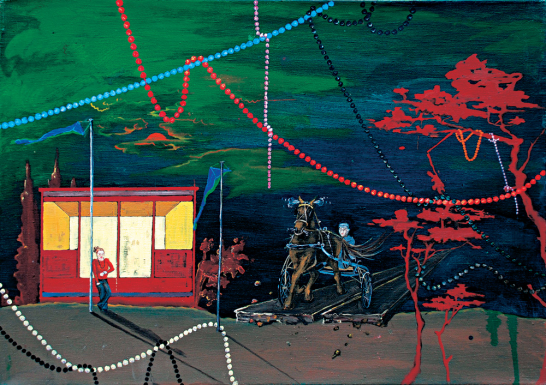























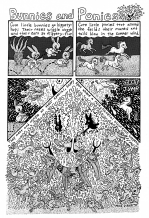
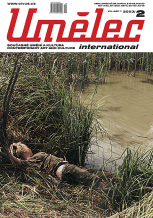
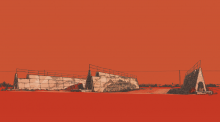
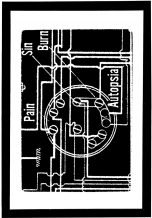


 New book by I.M.Jirous in English at our online bookshop.
New book by I.M.Jirous in English at our online bookshop.
Комментарии
Статья не была прокомментированаДобавить новый комментарий